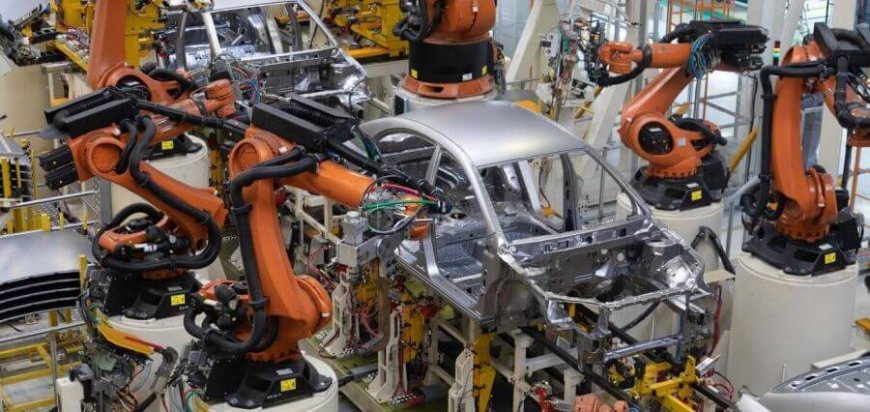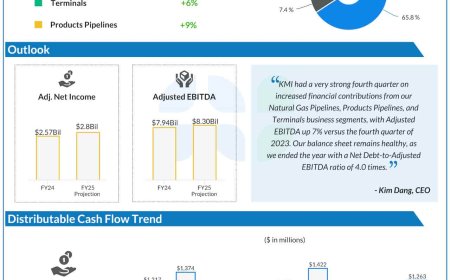Newest Innovations in Automotive Manufacturing: Gas vs Electric Vehicles
If you’re in the automotive manufacturing game—whether as an owner, manager, or team member—you know this is a time of rapid change. Electric vehicles (EVs) are stealing the spotlight, with their sleek designs and eco-friendly reputation, but gas-powered cars aren’t fading away quietly. Both sides are evolving, and innovation is the name of the game. […] The post Newest Innovations in Automotive Manufacturing: Gas vs Electric Vehicles appeared first on Insights Success.

If you’re in the automotive manufacturing game—whether as an owner, manager, or team member—you know this is a time of rapid change. Electric vehicles (EVs) are stealing the spotlight, with their sleek designs and eco-friendly reputation, but gas-powered cars aren’t fading away quietly. Both sides are evolving, and innovation is the name of the game.
For manufacturers, the big question is: how can you harness these innovations to improve efficiency, boost quality, and, most importantly, increase profitability? Let’s take a closer look at what’s happening in EV and gas automotive manufacturing solutions, and how you can leverage these changes to your advantage.
Electric Vehicles: Leading the Charge
1. Smarter Batteries for Longer Ranges and Faster Charging
Batteries are the beating heart of EVs, and the improvements here have been nothing short of groundbreaking. Newer lithium-ion and solid-state battery technologies are making EVs more affordable, driving farther, and charging faster than ever.
For example, advancements in battery technology have helped reduce EV production costs by 40% over the past decade. This has made EVs like the Tesla Model Y and Chevy Bolt more accessible to everyday consumers. As a result, global EV sales are growing at a jaw-dropping 23% annually—a sign that now is the time to double down on innovation.
2. Charging Stations: The Infrastructure Race
You can’t have EVs without places to charge them, and that’s where the industry is stepping up. Public charging stations have grown by 40% in just the last year, hitting over 3.2 million worldwide. On top of that, new tech like wireless charging and ultra-fast stations are reshaping the EV experience.
If your business is in EV manufacturing, partnering with infrastructure providers or integrating these advancements into your strategy could open up new revenue streams while supporting faster EV adoption.
3. Beyond Sedans: Expanding EV Applications
EVs aren’t just sleek cars anymore. We’re seeing electric trucks, buses, bikes, and even heavy-duty commercial vehicles enter the market. Take Rivian’s electric trucks, which are helping industries like construction and logistics embrace sustainable transportation. Expanding into these markets isn’t just a nice idea—it’s a necessity to stay competitive in the ever-widening EV landscape.
4. Sustainability: Not Just a Buzzword
One of the biggest selling points of EVs is their sustainability. But it’s not just about zero emissions. Manufacturers are leaning into recycled materials, eco-friendly production methods, and energy-efficient factories. For instance, using recycled aluminum in the Ford F-150 Lightning has helped cut costs while reducing environmental impact.
With regulations and consumer expectations moving toward sustainability, adopting green practices isn’t just good for the planet—it’s good for business.
5. Smarter and Safer with AI
EVs are leading the way in connected and autonomous technology. Self-driving features, predictive maintenance systems, and AI-powered navigation are becoming standard in high-end models. By 2030, the autonomous vehicle market is expected to hit $88 billion, and manufacturers who invest now will reap the rewards later.
Gas Vehicles: Adapting to Stay Relevant
1. Hybrids Are Stepping Up
Gas isn’t going anywhere just yet, and hybrid vehicles are proving to be a strong middle ground. By combining traditional Internal Combustion Engines (ICE) with electric motors, hybrids are delivering better fuel efficiency and lower emissions. It’s no surprise that hybrid sales grew by 12% last year, showing there’s still plenty of demand for these versatile vehicles.
2. Lighter, Stronger Materials
Weight is a huge factor in fuel efficiency, and gas vehicle manufacturers are leaning into lightweight materials like aluminum and high-strength steel. These materials have been shown to improve fuel efficiency by up to 15%, giving gas vehicles a competitive edge in a market leaning toward eco-conscious choices.
3. Smarter Engines for Cleaner Performance
Gas-powered engines are evolving, too. Technologies like turbocharging, direct fuel injection, and variable valve timing are improving engine performance while cutting emissions. Mazda’s Skyactiv engines are a great example of how ICE innovations are staying relevant in a changing market.
4. Going Green with Manufacturing
More gas vehicle manufacturers are embracing sustainable practices, from waste reduction to using recycled materials. Toyota, for instance, has implemented closed-loop recycling systems in its factories, reducing both costs and environmental impact.
5. Robotics and Automation
Automation is revolutionizing gas vehicle production. Robots are handling repetitive tasks with precision, cutting down on errors and speeding up production. This has led to a 20% increase in manufacturing efficiency across many factories, proving that even traditional processes can benefit from modern tech.
What’s Next? Blending Innovation for a Bright Future
The automotive industry is heading toward a future where electric and gas technologies coexist. Electric vehicles are setting the bar with sustainability and innovation, while gas-powered vehicles are fighting back with smarter engines and hybrid options. For manufacturers, the key to success lies in embracing the best of both worlds.
Whether it’s investing in better battery tech, adopting lightweight materials, or automating your production lines, innovation is your ticket to staying competitive in a rapidly changing market. As consumer preferences shift and regulations tighten, those who adapt will thrive—and those who don’t risk being left behind.
So, what’s your next move? Whether it’s leaning into EVs, refining your gas vehicle lineup, or exploring hybrid possibilities, the road ahead is full of opportunities.
The post Newest Innovations in Automotive Manufacturing: Gas vs Electric Vehicles appeared first on Insights Success.











































